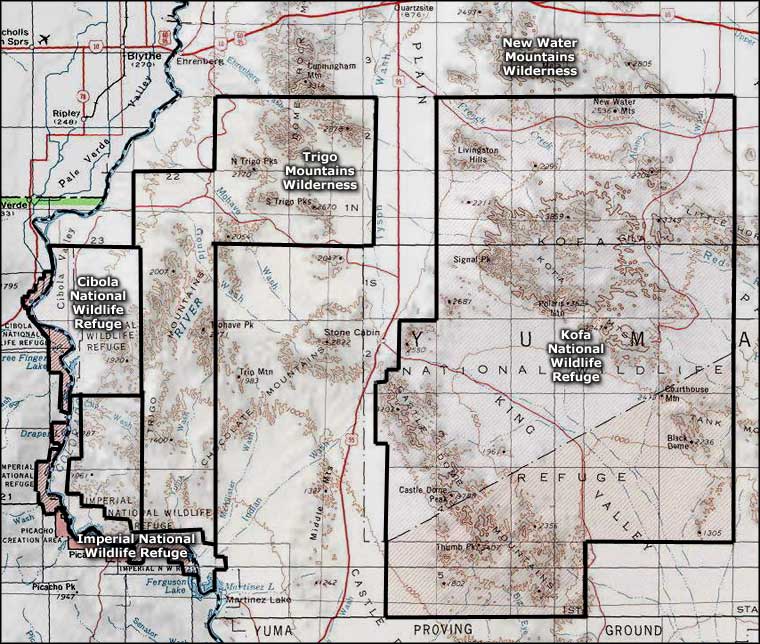Imperial National Wildlife Refuge

In the backwaters of the Colorado River

On the last un-channeled section of the Colorado River (before it enters Mexico), you'll find the 25,768-acre Imperial National Wildlife Refuge. This is a green oasis of wetlands and backwater lakes surrounded by open desert. The refuge is a haven for both local desert fauna and migratory avian wildlife.
There are many bird species that hang out here all year round but winter is when the place really fills up. Located in the Pacific Flyway, Imperial NWR is one of the last big stops for many migratory birds before heading down to the Mexican coastline.
For many years the Colorado River corridor was lined with tall cottonwoods, willows and sycamores. In the days of steamboats plying the Colorado, much tree cover was chopped down and fed to the steam boilers. More was cut down to increase cropland acreages. Then came the era of dam building and water-flow control. The periodic flooding that had previously made this floodplain such a fertile landscape ceased. As dam after dam was built on the Colorado, the rising waters behind those dams drowned the big trees upstream and everything changed. Today, the US Fish & Wildlife Service is planting cottonwoods and willows to correct some of the damage done but it will take many years.
In the meantime, the acreage of the Imperial National Wildlife Refuge is being managed to sustain open water, wetlands and riparian habitats that have been in short supply for years. There's about 30 miles of the Colorado River within the refuge. The river water that arrives here is being controlled to manage marsh units, restore riparian habitats and irrigate croplands that provide grasses and grains for the huge influx of wintering birds.
More than 15,000 acres of the refuge are now designated wilderness area, a place where humans can go on foot and horseback only, so that we don't continue to negatively impact the place.
Along the Red Cloud Mine Road you'll find the 1.3-mile Painted Desert Trail. This trail gives you the opportunity to walk through a zone of desert plants and multi-colored rock left after volcanic activity in the area some 30,000 years ago. At the end of the trail is a panoramic view over the refuge and the Colorado River valley. There are also several lookout points on the refuge that can be reached with a normal motor vehicle, but if you get interested in that area beyond the Painted Desert Trail, you'll want a good 4WD vehicle with high clearance.
Imperial NWR is a day-use refuge only. Camping and campfires are not allowed on the property. Wildlife observation, photography and hiking are encouraged on the property (just not within the waterfowl management units or the staff residence area). Boating is allowed in some areas. Hunting and fishing are also allowed in some areas (but you'll need a proper license and it must be the appropriate season). Leave the plants and animals alone, don't be collecting the rocks or minerals, don't be digging for "objects of antiquity," keep your vehicle(s) on the designated roads and keep your pets on a leash and under control.
To get there: go north from Yuma on Arizona Highway 95 for 25 miles to Martinez Lake Road. Go west on that for another 13 miles, then follow the refuge signs to the visitor center. The Visitor Center is open Monday through Friday from 7:30 am to 4:00 pm, although from November 15 to March 31 it is also open Saturday and Sunday from 9 am to 4 pm. At the visitor center you'll find a native plant garden, interpretive exhibits and a small auditorium where wildlife videos run all day.

At the Painted Desert Trailhead
Photos and map courtesy of the US Fish & Wildlife Service

